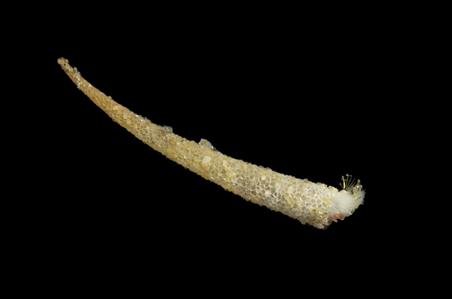General Description
In members of this genus the cephalic veil and the dorsal part of the opercular rim are both cirrate. This species can be distinguished by the anteroventral lobe of chaetiger 2, which is ornamented with 12-19 papillae, which are absent in the other two Australian Pectinaria species. Body up to about 6 cm long.
Biology
Pectinariidae live vertically, head-down in sandy sediments, with the narrow tip of the conical tube at about the sediment surface. They feed on buried organic matter within the sediments. A number of species in the same family occur in Australian waters, but Pectinaria anitpoda is one of the most common and widespread.
Habitat
Inshore waters and shallow embayments, continental shelf, to depth of about 90 m.
Soft substrates
Seagrass meadows
Distribution guide
Southern Australia.
Species Group
Depth
Shore (0-1 m)
Shallow (1-30 m)
Deep ( > 30 m)
Water Column
Max Size
6 cm
Diet
Organic matter
Commercial Species
No
Global Dispersal
Native to Australia
Species Code
MoV 3440
Identify
Conservation Status
- DSE Advisory List : Not listed
- EPBC Act 1999 : Not listed
- IUCN Red List : Not listed




